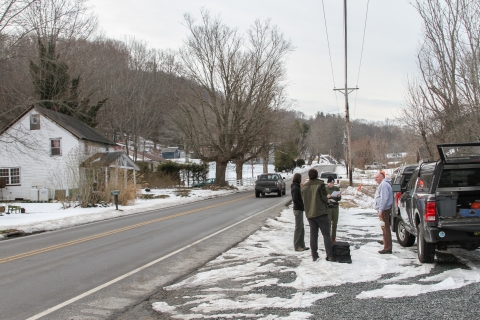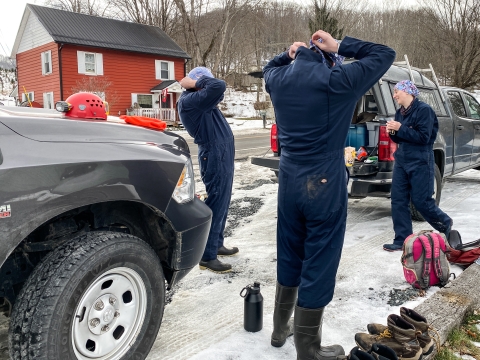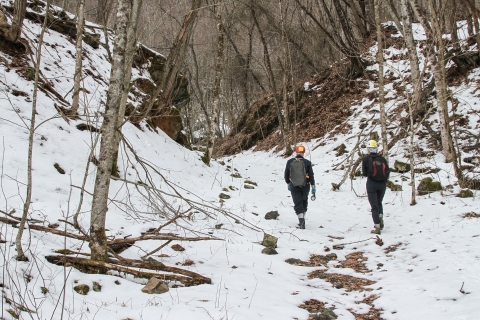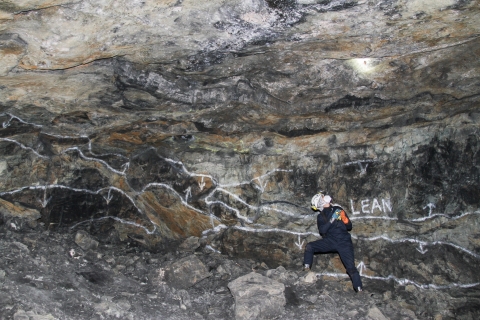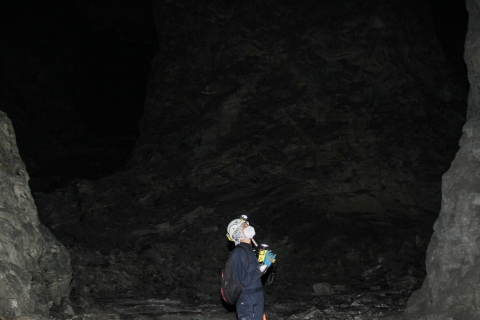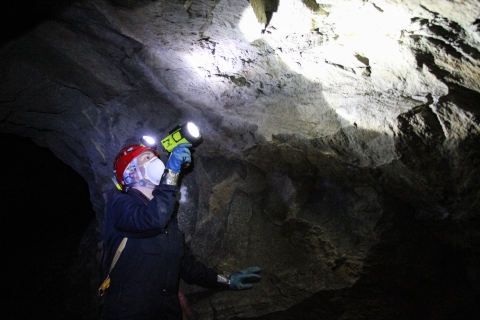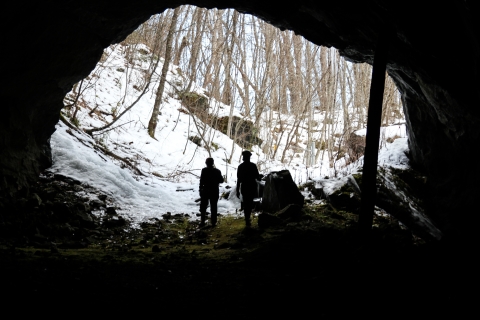U.S. Fish and Wildlife Service biologist Sue Cameron compared the abandoned iron mine in Avery County, North Carolina to Moria, the fictional subterranean city of the dwarves in J.R.R. Tolkien’s Lord of the Rings trilogy. To search for bats there was minimal crawling though tight passageways, but ample craning necks upward, toward the ceilings of expansive underground chambers.
Extraction began at the mine in the early 1800s continuing into the twentieth century. Once abandoned, the mine functioned as an artificial cave for bats, and biologists took note. The first inventory of bats in the mine happened in 1986, with regular surveys beginning in 1992.
Today, biologists with the North Carolina Wildlife Resources Commission visit the mine every two years to track bat numbers and diversity. The banner year was 2008, when more than 1500 bats, representing at least five species, were seen.
The road to conserving the mine began in earnest in 2002, when the Commission acquired the mineral rights and a conservation easement conservation easement
A conservation easement is a voluntary legal agreement between a landowner and a government agency or qualified conservation organization that restricts the type and amount of development that may take place on a property in the future. Conservation easements aim to protect habitat for birds, fish and other wildlife by limiting residential, industrial or commercial development. Contracts may prohibit alteration of the natural topography, conversion of native grassland to cropland, drainage of wetland and establishment of game farms. Easement land remains in private ownership.
Learn more about conservation easement on the site, helping to ensure the mine would continue to function as a home for bats. The year also saw the installation of a specially designed gate allowing bats free passage as they flew between the gate’s bars, while keeping out unwelcome visitors who might disturb bats during hibernation – when they are most vulnerable.
The latest chapter in the conservation effort saw the mine and surrounding area purchased by North Carolina philanthropist, conservationist, and tech entrepreneur Tim Sweeney in 2019.
This year, state bat biologist Katherine Etchison was joined by fellow Commission staff Kendrick Weeks and Kyle Shute, the Service’s Sue Cameron, and an unlikely addition to the group, videographer Nicholas Mullins. The effort uncovered 13 bats total, representing four species – the dramatic decline from peak numbers due to white-nose syndrome, a fungal disease first seen in New York in 2006 and responsible for the deaths of millions of bats as it spreads across North America.
If there was a bright point in the day, it’s that two of the species seen – tricolored and little brown bat – are both under consideration for protection under the Endangered Species Act, so their persistence here is a boon.
White-nose syndrome underlies a bittersweet story at this mine. While efforts to conserve the site have enjoyed a string of successes, the mine’s bat population has plummeted. However, conserving the mine provides a home for those bats that don’t succumb to the disease, and it lays the groundwork for a strong long-game, looking to the day when the specter of white-nose syndrome begins to wane and North Carolina’s bat numbers begin to rebound.


